ORGANISATION, STRATEGY & DESIGN : DESIGN SOLUTIONS FOR AN AGEING POPULATION? : 09.01.06
Phil Bartlett – Director Business Design, Department of Work & Pensions (DWP)
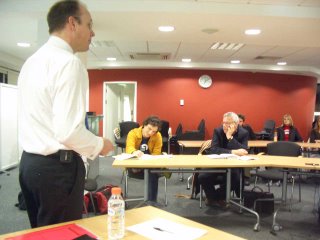
Phil Bartlett in his position as Business Design Director for the DWP employs a unique approach in order to prototype new ideas, test and solve existing systems problems, as well as building and communicating solutions into the Department.
The approaches rely on Solutions Centres and events, Design led approaches and Multi-Media Artefacts created by users and staff and workspaces designed to enable forms of “social prototyping”.
He defines his background as 10 years of turning strategy into action within a context of championing the elderly, the pensions crises and assisting the current generation to fulfil their hopes and aspirations. This Pensions department has approximately 15 million working age customer and administers approximately £60billion of taxpayers money. They have reduced their staff from 20000 to 14000 in the last 3 years and are intending to halve that. They have shifted their organisation from 400 local offices to 20 call centres.
A component of their work is not only to enable the shifts in the organisation, but also introduce new products. The Pension Credit has been introduced in 2.7 million households. They have redesigned the state pension product to enable it to be processed in 12 minutes rather than 60 days.
These are clearly change processes that take place on a large stage and require serious navigation through complex scenarios.
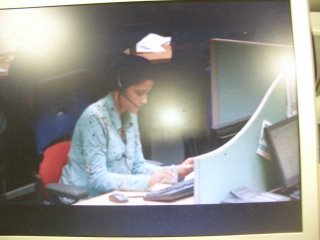
Phil takes a process view of the organisation and talks of the importance of making time to dream first in order to understand the problems or opportunities, then defining the outcomes. The Solution Design is created only after they are clear about where they’re wanting to go. They next rigorously build business cases and demonstrate the future before testing, building and deploying.
Phil talks about the importance of catching the Dream and coming at it from the Future – working backwards in effect. They also take time to bring their partners and stakeholders into the Dream. By using techniques that externalise and create a shared view of the problem.
One of these techniques is the creation of media artefacts. Phil showed an example called the Bereavement Journey. A worst case scenario, based on a true story, which takes an emotional perspective of what the Department requires of someone at the time they are in an deeply emotional state. It is difficult to watch as the frustration and despair unfolds on screen. However the process points are powerfully made. What is most interesting about this artefact, though, is that it was made by the internal team, scripted by them, and professional skills only support the creative process. The making of the artefact is as much a part of enabling rapid alignment as it is of creating a useful communication tool.
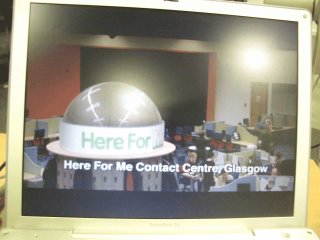
Those involved in the storyboarding the film included members of the taskforce as well as experts, funeral directors, police, leaders of religious groups. They were challenged with articulating the problem in a which could be easily communicated.
Part of Phil’s technique is to focus on the customer in order to create client-centred solutions.
One of the places where this work is done is in a purpose built Solutions Centre in Glasgow, which has all the group facilities and production support necessary for large teams to work together.
We were shown a film that introduces the Solutions Centre.
Phil listed as key to the ways of working in the Solution Centres:
- a core group sets directions
- use of multi-disciplinary groups
- 6-8 weeks cycle of activity
- being innovative and ambitious
- a ‘can do’ attitude
- robust, constructive challenge
- every person on the team having an equal voice
- transparency and trust
- confidential teams enabling openness of discussion
- working within a technologically enabled site
- strict behaviour codes for core team meetings
- drawing in of external thinking
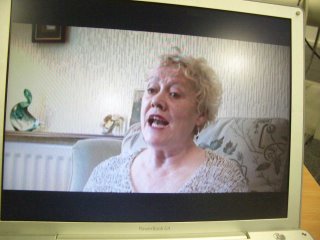
One of the future visioning projects that Phil is currently working on is called “here4me”. They have created media artefacts which again make the case for change very clearly through acted scenarios showing both the client impact and the impact on work within the department. This project is still in the pilot phase, and their prototyping environments are demonstrating process improvements from 13 weeks to 5 days.
Phil showed another artefact – the story of an elderly couple who have got married, and changed their care status – as well as the status of their carers. A complex situation that was solved by a single call to a single point of access call centre and individual who was problem solving on their behalf.
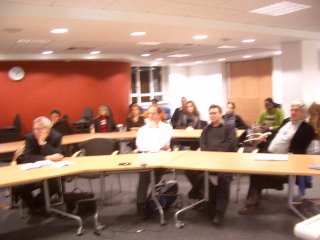
Question: Why this approach?
PB: We’re so big we had difficulty sustaining the change so we’ve been looking for different ways of working that enable us to accelerate.
Question: How did you manage to convince the rest of the organisation about this way of doing things?
PB: The thing that makes the difference is the showing and demonstrating. Quite often we’ll bring groups into an interactive theatre, in order for them to participate in simulating the solutions. We use storytelling to involve people. The more interactive we can make things the more skin in the game we evoke.
Question: How important is the built environment?
PB: Taking people away from their usual environment has powerful results. At the solutions centre we try to provide a friction free space, where things are easily achieved. Our ways of working are based on facilitated sessions and creating prototyping spaces.
Question: You describe a standard Design Process - where designers create the dream and then attempt to sell it to the implementers. How do you ensure it doesn’t all fall apart in the fabrication?
PB: We do rigorous cost benefit analyses and business cases. We challenge the problem solvers to build viable solutions with teams who will also be involved in the implementation. We prototype and test various solutions before we commit to building and deploying.
Question: How do you prototype your systems?
PB: Our IT systems are mostly legacy systems using old green screens. Agents may need to navigate 13 -36 screens. By prototyping new live screens, and the processes that best support their use, we’re able to determine best practise. We’ve also built internet solutions simultaneously. We are able to bring the business into the centre and trial things there using live data and customers.
Question: How do you get project?
PB: All our projects are sponsored by Directors. We may also do some blue sky thinking that is pure-enquiry we well. We have a culture where an outcome to a problem maybe that there is nothing that can be done to solve it in the short term – but at least we know that – rather than suspect that.
Question: Do you use designers in the centre?
PB: We don’t have designers permanently there – but we work with external organisations and bring designers in.
Question: Do you work with Design Consultancies?
PB: Not with the processes as such, but certainly we work with designers in partnerships.
A fascinating insight into solving complex problems, design led collaborative authoring of media artefacts and social prototyping using a solutions centred approach.



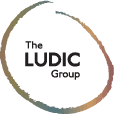
 subscribe to our feed
subscribe to our feed
0 Comments:
Post a Comment
<< Home